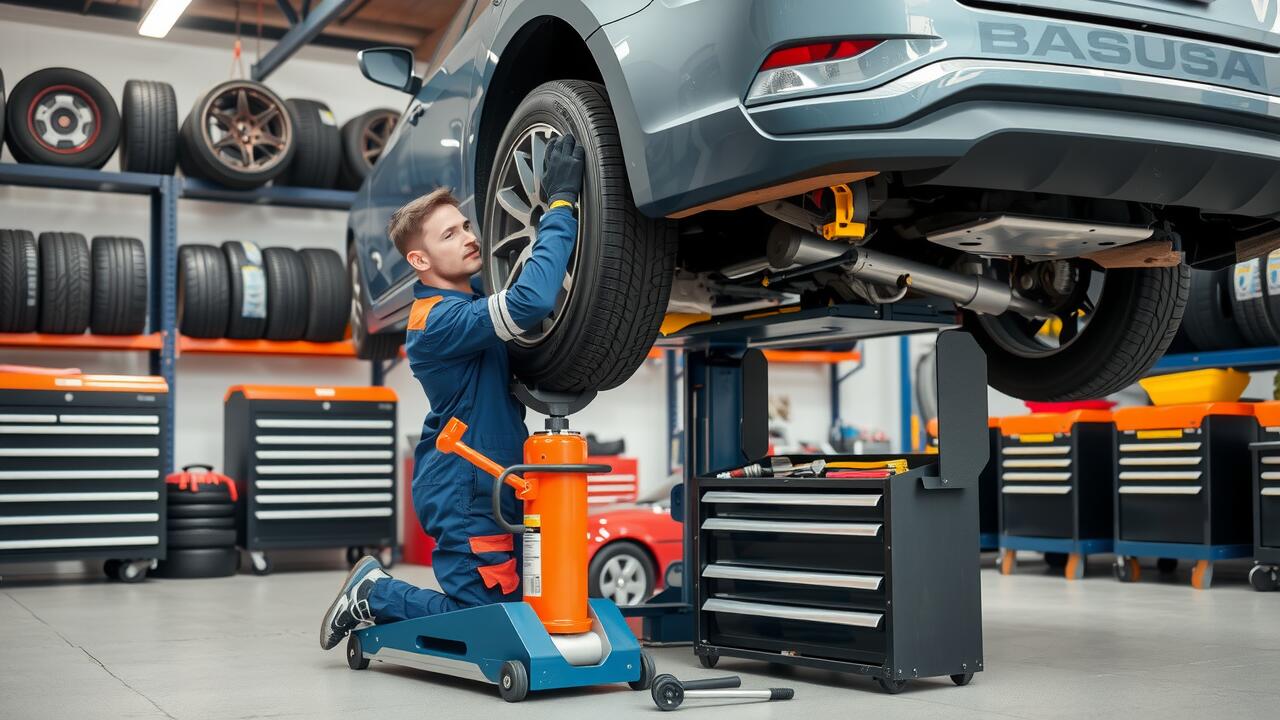
Choosing the Best Location for Tire Changes
Selecting the right location for tire changes plays a crucial role in the overall process. Look for a flat, stable surface away from busy traffic. Parking lots or residential driveways often provide the ideal conditions. Adequate lighting is also essential, especially for evening changes. This enhances visibility and allows for careful inspections of the tires and tools.
Access to necessary tools and supplies is another consideration when choosing a location. Ensure there is enough space to lay out equipment like jacks, wrenches, and tire changers. Proximity to a power source can be beneficial, particularly for those using electric tools. Keeping all items organized reduces frustration and aids in smoother tire changes.
Factors to Consider for an Ideal Tire Change Environment
When planning for tire changes, selecting a suitable location is crucial for both safety and efficiency. A flat surface, such as a garage floor or a parking lot, provides stability and reduces risks associated with working on uneven terrain. Adequate lighting is another important factor. Proper illumination not only helps in visualizing tire specifications and tools but also enhances safety, particularly if the changes take place during dusk or dawn.
Accessibility to tools and equipment also plays a significant role in ensuring tire changes go smoothly. Keeping all necessary tools, such as a jack, lug wrench, and air compressor nearby minimizes the time spent searching for items mid-process. Additionally, consider the weather conditions, as changes may need to be postponed if extreme temperatures or rainfall are present. A sheltered, dry environment can greatly improve the overall experience.
Tips for Handling Different Types of Tires
When handling different types of tires during tire changes, it is essential to recognize the specific requirements associated with each type. All-season tires generally offer versatility and can be used year-round, making them a popular choice for many drivers. These tires can often be changed without much concern for the season. Winter tires, however, require careful handling due to their unique tread design, which is optimized for snowy and icy conditions. Ensuring that winter tires are properly installed and inflated will enhance performance during the colder months.
Another vital consideration is the condition of the tires being changed. Inspecting tires for wear patterns, cracks, or damage allows for informed decisions regarding replacements. Different tires may also require varying air pressures and alignment settings, impacting performance and safety. Utilizing the correct tools and methods for tire changes can prevent injury and prolong the life of the tires. Adopting best practices tailored to the type of tire being handled will contribute positively to the overall tire change experience.
Special Considerations for All-Season vs. Winter Tires
When handling tire changes, the differences between all-season and winter tires should be well understood. All-season tires are designed to perform adequately in a variety of conditions, making them a popular choice for many drivers. However, their performance can decline in extreme winter conditions. In contrast, winter tires have specialized tread patterns and rubber compounds that enhance grip on snow and ice, which provides better traction in cold weather.
Proper storage and maintenance are vital considerations for both types of tires during tire changes. All-season tires can typically be stored in a dry, cool place, ensuring they retain their shape and performance. Winter tires, on the other hand, should be frequently checked for wear and damage due to their seasonal use. Understanding these nuances will aid in deciding the best tires for your climate, leading to safer driving experiences year-round.
Disposal Options for Old Tires
When it comes to tire changes, disposing of old tires responsibly is crucial for both environmental and safety reasons. Most local tire retailers offer disposal services when you purchase new tires. This option often includes recycling programs that ensure the old tires are processed in an eco-friendly manner. Many retail locations have partnerships with companies specialized in recycling tires, turning them into products like rubber mulch and asphalt.
Alternatively, if you prefer to handle tire disposal yourself, look for local recycling centers that accept tires. Communities often have scheduled tire collection events, providing residents an easy way to get rid of old tires without the hassle of finding a disposal site. Be mindful not to toss tires in regular trash, as they can create environmental issues and may incur fines. Exploring these disposal options can help ensure a smooth process during tire changes.
Environmentally Friendly Ways to Get Rid of Tires
Proper disposal of old tires plays a crucial role in maintaining environmental health. Many local automotive shops and tire dealers offer tire recycling programs. These places often have established partnerships with recycling facilities that can turn old tires into products like pavement or rubber mulch. Utilizing these services allows for responsible disposal while supporting community efforts to reduce waste and promote recycling.
Another option is to check with local waste management facilities that may accept tires for recycling. Some municipalities hold special collection events for tires, providing residents with a convenient way to drop off their unwanted tires without impacting landfill space. Engaging in such programs not only aids in effective tire disposal but also raises awareness about the importance of sustainable practices, especially during tire changes when the need for new tires arises.
FAQS
What is the best location for changing tires in Raleigh?
The best location for changing tires in Raleigh is a flat, dry area with enough space to work comfortably. Consider using a garage or a well-lit parking lot, ensuring you have access to tools and safety equipment.
Are there specific factors to consider for an ideal tire change environment?
Yes, important factors include lighting, weather conditions, and the surface of the ground. A well-lit area is essential for visibility, while a stable, flat surface helps in safely lifting the vehicle. Avoid changing tires in adverse weather conditions if possible.
What are some tips for handling different types of tires?
When handling different types of tires, familiarize yourself with the specific requirements for each type, such as the recommended pressure and tread depth. Use the appropriate tools for changing tires and ensure you’re following the manufacturer's guidelines for installation.
What special considerations should I keep in mind for all-season vs. winter tires?
When switching between all-season and winter tires, be aware of the temperature and road conditions. Winter tires provide better traction in cold and snowy weather, while all-season tires are suitable for milder conditions. Always check the tread depth and condition of the tires before installation.
What are the environmentally friendly options for disposing of old tires?
Environmentally friendly disposal options for old tires include recycling them at designated tire recycling centers, returning them to tire retailers who offer disposal services, or participating in community recycling events. Avoid simply discarding tires in landfills to minimize environmental impact.
